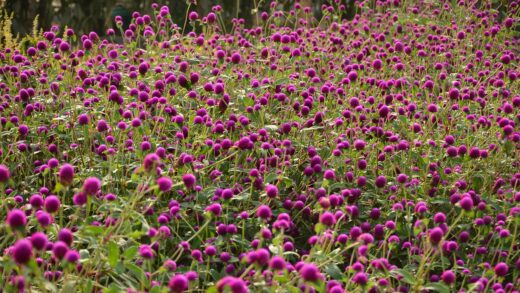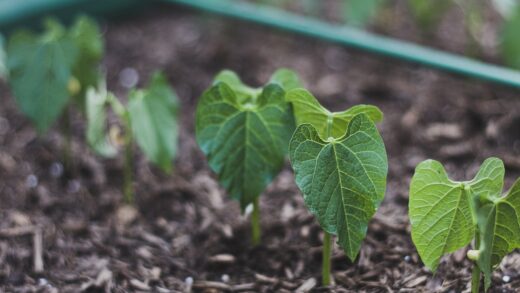The Phalaenopsis, more commonly known as the moth orchid, is one of the most popular houseplants today, captivating anyone with its elegance and long-lasting, colorful blooms. Many are intimidated by it, yet its care is by no means as complicated as it first seems; we just need to learn and respect a few of its basic needs. The key to success lies in trying to replicate the conditions of its natural habitat as closely as possible, where it leads an epiphytic, or tree-dwelling, lifestyle. This article will help you understand the inner world of the moth orchid and master the correct care practices for long-term, healthy growth and regular flowering.
Moth orchids originate from the tropical rainforests of Southeast Asia, where they live on the branches of trees in the filtered light of the canopy, clinging to the bark with their roots. This epiphytic lifestyle fundamentally determines all their needs, from light conditions and watering to the potting medium. Their name, Phalaenopsis, comes from the Greek words “phalaina” (moth) and “opsis” (like), referring to the moth-like shape of their flowers. In their native habitat, high humidity, warmth, and continuous, gentle air movement provide them with the ideal environment, which we must imitate in home conditions.
Understanding the plant’s anatomy is essential for successful care. The moth orchid does not have classic pseudobulbs like many other orchid species; it stores water and nutrients in its fleshy leaves and special aerial roots. The roots are covered by a spongy, whitish-silvery layer called the velamen, which can absorb moisture from the air and precipitation, and also participates in photosynthesis. The thick, fleshy leaves that grow from the basal rosette also play a key role in water storage, while the flower spike emerges from the side of the plant, from the axils of the leaves.
The vast majority of moth orchids available in commerce are complex hybrids, specifically bred to adapt well to home conditions and produce spectacular, long-lasting flowers. This is responsible for the extraordinary richness of colors and shapes, from snow white to deep burgundy and spotted and striped varieties. Although there may be minor differences in the needs among the countless hybrids, the care guide detailed in this article can be successfully applied to most Phalaenopsis, providing a solid foundation for keeping the plant.
The right light and temperature conditions
The most ideal location for a moth orchid is bright, but protected from direct, scorching sun. Imagine its original habitat, the tropical canopy, where sunlight reaches the plant in a filtered form through the leaves; you need to create similar conditions at home. The most suitable is an east-facing windowsill, where it receives the weaker morning sun, but south and west-facing windows can also be good if you provide some shading with a thin curtain, or if you place it a little further from the windowsill. Direct sunlight is scorching and can cause permanent burn spots on the leaves.
More articles on this topic
The color of the leaves is an excellent indicator of whether the plant is receiving enough light. If the leaves are a vibrant, grassy green, then the light conditions are optimal. If the leaves turn dark green and floppy, it is a clear sign of light deficiency, which also leads to a lack of blooming. Conversely, a yellowish, pale leaf color, possibly with a reddish tinge, indicates slightly too much light, which can be a precursor to leaf burn. Observe your plant’s reactions and adjust its placement as needed to find the perfect balance for it.
In terms of temperature, the moth orchid prefers a warm, stable climate, which fortunately is very similar to the average room temperature in most homes. During the day, the ideal range is between 20-29°C, while at night, a slightly cooler temperature of around 16-18°C is most favorable. This difference between day and night temperatures is extremely important, as this natural fluctuation stimulates the plant to bloom, especially in the autumn. A stable temperature, free from extremes, is key to healthy development.
The moth orchid does not tolerate drafts and sudden temperature fluctuations well, so avoid placing it near doors, windows, radiators, or air conditioners. In winter, be especially careful that the cold window glass does not touch the plant’s leaves, and move it away from the window when airing the room to protect it from cold shock. One of the most common reasons for bud drop is a sudden environmental change, including a drastic drop in temperature, so providing a stable, calm environment is essential for successful flowering.
The art of watering and humidity
Most mistakes in caring for moth orchids are made in watering, with the most common fatal error being overwatering. Since these plants are epiphytes, their roots are not in a constantly moist medium in nature, but dry out quickly after showers due to air movement. The roots of a potted orchid also require this drying-out period, because standing water creates an oxygen-deficient state, leading to root rot. The basis of the correct watering technique is therefore to follow the principle of “soak thoroughly, then let it dry out completely.”
More articles on this topic
The best method of watering is soaking. Place the pot in a container of water or the sink so that the water reaches the rim of the pot, but does not flow into the crown of the plant. Let the plant soak for about 15-30 minutes, so that the potting medium and roots can thoroughly absorb water, then lift it out and let all the excess water drain away completely through the holes at the bottom of the pot. Always use room-temperature, soft water, such as rainwater, distilled water, or boiled and cooled tap water, as hard, chlorinated water can damage the sensitive roots.
Never determine the frequency of watering by a calendar, but always according to the condition of the plant and the potting medium. The most reliable method is to check the color of the roots, which is extremely easy in a clear pot. When the roots are moist, they are a vibrant, deep green, but when they are dry and need watering, their color changes to a silvery-gray. Other signs can be a decrease in the weight of the pot and a dry feel to the potting medium. Allow the medium to almost completely dry out between two waterings to prevent root rot.
Due to its tropical origin, the moth orchid prefers high humidity of 50-70%, which is lower than this in most homes, especially during the heating season. There are several proven methods to increase humidity: you can place the pot on a tray filled with water and pebbles, making sure the bottom of the pot does not touch the water. Using an electric humidifier or grouping plants together can also be an effective solution. Misting the leaves only provides temporary relief, and if water sits in the leaf axils or the heart of the plant, it can lead to crown rot, so use this method only cautiously with good air circulation.
Fertilizing and potting medium
In nature, moth orchids live on a rather poor nutrient supply, so they only require moderate fertilization in home conditions. Over-fertilizing can cause much more damage than nutrient deficiency, as the accumulating salts can burn the sensitive roots. Only fertilize during the active growing season, when the plant is developing new leaves, roots, or a flower spike. In the winter months, when light conditions are weaker and growth slows down, reduce the frequency of fertilizing to once a month, or omit it altogether.
For fertilizing, use a balanced fertilizer specifically developed for orchids, which contains nitrogen, phosphorus, and potassium in the right proportions (e.g., 20-20-20). Always dilute the concentration recommended on the packaging to half or a quarter, following the “weakly, weekly” principle. A proven method is to add a little fertilizer to the water every second or third watering. It is worthwhile to thoroughly flush the potting medium with clean water once a month to wash out accumulated mineral salts, thereby preventing root damage.
The choice of potting medium is critical, as the moth orchid does not require traditional potting soil, but a loose, airy medium with excellent drainage. The most common components are pine bark, coconut coir, charcoal, perlite, and sphagnum moss in various proportions. These materials provide the necessary aeration for the roots while being able to retain the right amount of moisture. The medium must support the plant, but at the same time allow the roots to “breathe,” preventing the standing water that causes rot.
When choosing a pot, the most practical are clear plastic pots, as they allow you to easily check the condition of the roots and the moisture content of the medium without disturbing the plant. Make sure the pot has ample drainage holes on the bottom and sides for proper ventilation. Clay pots can also be a good choice, as their porous material provides better aeration, but this also means the potting medium dries out faster in them, which may require more frequent watering. The size of the pot should always be just slightly larger than the plant’s root system.
The basics of repotting and propagation
A moth orchid generally needs to be repotted every 1-2 years, or when the potting medium is visibly worn out and compacted. The bark pieces that break down over time lose their loose structure, which impairs the aeration and drainage of the roots, thereby creating a risk of rot. Other signs that repotting is necessary are when the roots densely grow out of the pot, or if the medium has a sour, musty smell. The most ideal time for repotting is the dormant period after flowering, when the plant is just beginning to grow new roots or leaves.
Perform the repotting process carefully and cautiously. First, gently remove the plant from the old pot, if necessary by gently squeezing the pot or even cutting it open. Gently but thoroughly remove the old potting medium from among the roots, then use sterilized scissors or pruning shears to cut off all dead, shriveled, or rotten root parts. Healthy roots are firm and fleshy, while rotten ones are mushy, brown, or black. Leave the intact, greenish-silvery roots untouched.
The new pot should only be one size larger than the previous one, as the moth orchid likes its roots to be slightly tight. Place the plant in the center of the pot, then begin to fill it with fresh, slightly moist orchid potting medium, gently shaking the pot so that the bark pieces fill the gaps between the roots. Ensure that the plant stands stable, but do not compact the medium too much, as this would be at the expense of aeration. The base of the plant, the base of the leaves, should remain on the surface of the medium, not get below it.
Post-repotting care is crucial for the plant’s stress-free recovery. Do not water the plant immediately after repotting, but wait for about a week to allow any damaged roots time to heal, thus preventing infections. During this period, place the plant in a slightly more shaded, high-humidity location, and you can help maintain hydration by lightly misting the leaves. Once the growth of new roots begins, you can return to the usual watering and fertilizing routine.
Flowering and managing common problems
The most important condition for encouraging a moth orchid to bloom is providing the right temperature fluctuation. In nature, the formation of the flower spike is initiated by the cooling of autumn nights. You can imitate this in home conditions by providing the plant with a nighttime temperature of around 16-17°C for 2-4 weeks, while the daytime temperature remains in the usual warm range. This difference between day and night temperatures is the main stimulant that prompts a healthy, mature plant to bloom.
What to do after flowering depends on the condition of the flower spike. If the flower spike has completely dried up and turned brown after the flowers have fallen, it is best to cut it off at the base with a sterile tool so that the plant does not waste its energy on it. If the spike remains green and vigorous, you have several options: you can cut it off at the base to let the plant gather strength for re-blooming, or you can cut it back to just above a dormant bud (node) by about 1-2 centimeters. In the latter case, there is a good chance that another, though usually smaller, flower cluster will develop on the spike.
Like all houseplants, the moth orchid can be attacked by pests, most commonly mealybugs, scale insects, and spider mites. The best method of prevention is regular, thorough inspection, especially on the undersides of the leaves and in the leaf axils. For minor infestations, you can remove the pests with a cotton swab dipped in alcohol. For larger infestations, use neem oil or a special insecticide that can also be used on orchids, according to the instructions for use.
Among diseases, the most common are root and crown rot resulting from overwatering. Crown rot can be prevented by being careful not to get water between the leaves, in the center of the leaf rosette, during watering; if it does happen, blot it up with the corner of a paper towel. Root rot can be avoided with the correct watering technique and an airy potting medium. In case of fungal or bacterial leaf spots, remove the infected leaves and ensure better air circulation. Prevention is always easier than cure, so establishing the right care routine is the most important thing for maintaining the plant’s health.




















